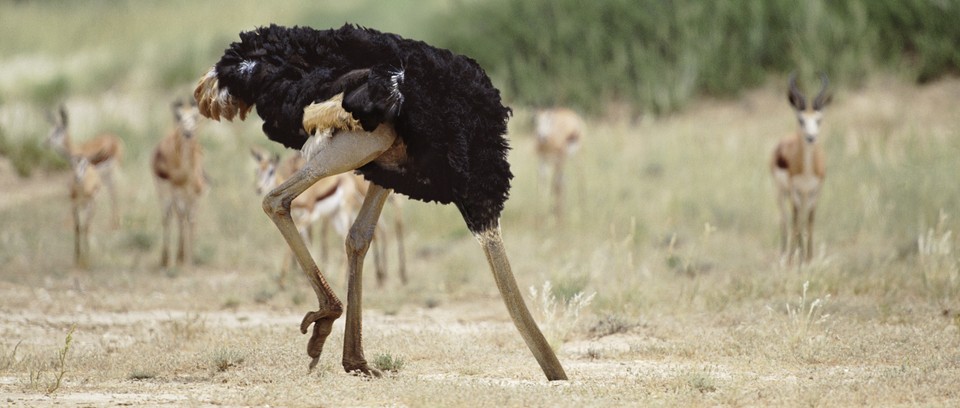Why it's not true: Ostriches don't bury their heads in the sand — they can't breathe! However, they dig a hole in the soil for use as their egg nest. Birds put their heads in holes and spin eggs several times a day. So it looks like a bird is burying its head in the sand! General characteristics of ostriches Ostriches live in areas shared with grazing animals, and these herbivores remove food that is part of the ostrich's diet. Warn grazing animals because they have a great vision and are high enough to find potential threats. There is also an explanation that ostriches lie with their heads facing the ground to hide and imitate the sand, rather than burying their heads in the sand. Ostriches can survive for several days without water because they can survive well with the water they get from their diet. Ostriches need to nest in the ground and pierce their heads in the sand. Birds build nests to house their eggs. Ostriches are also birds, which also means building nests. The problem is that ostriches can't fly and there is no way to stand up on a tree and build a traditional nest that you would normally imagine for a bird's neighbor.
Do ostriches really bury their heads in the sand?
After all, when an ostrich buries his head in the sand, he quickly suffocates. But given what we know about ostriches, it's easy to see how this myth began.
What are the characteristics of ostriches?
Ostriches are the largest and heaviest living birds in the world. Despite being 7-9 feet tall and weighing 350 pounds, these birds have relatively small heads. When building a nest, they dig a shallow hole in the ground for use as an egg nest. They use their beaks to spin eggs several times daily.
Why do ostriches lie down?
This myth may also have arisen from the behavior of several other ostriches. For example, when ostriches eat plants along the ground, they can easily look like they have their heads buried in the sand, especially from a distance. Similarly, ostriches often lie on the ground when they feel threatened.
How do ostriches build their nests?
Ostriches dig shallow holes in the ground to build nests. After spawning, they are frequently rearranged to the proper condition. They shake their heads at them, so they may appear to be filling them.
Why do ostriches fill their heads?
An ostrich, a flightless bird, cannot nest in trees and lays eggs in holes dug in the ground. Occasionally pierce the nest into the nest to rotate the egg and make it appear as if it is trying to hide it so that the egg is heated evenly. Therefore, it is a myth.
Which animal is burying its head in the sand?
Ostriches are large, fierce and not afraid to confront predators. It's far from the unjustified reputation of being timid and burying his head in the sand. 11th. 2015
How do ostriches hide?
Contrary to common myth, ostriches do not bury their heads in the sand! When an ostrich feels dangerous and cannot escape, it bounces off the ground and remains stationary with its head and neck flat on the ground in front of it. The head and neck are pale in color, so they blend in with the color of the soil.
Why does Emu stick his head to the sand?
Ignore burying your head in the sand, or deny the existence of the problem in the hope that it will eventually disappear.

Below you will find two helpful answers on a similar topic. 👇
What animal causes the most human deaths?What are animals that give birth to babies called?
